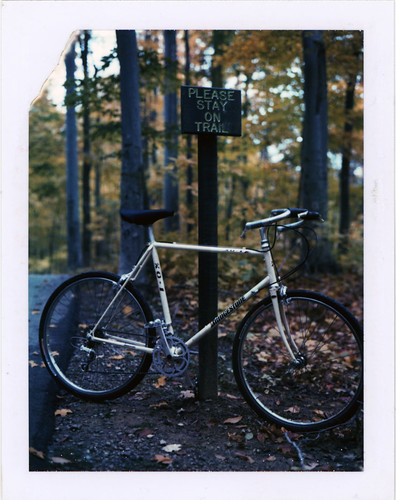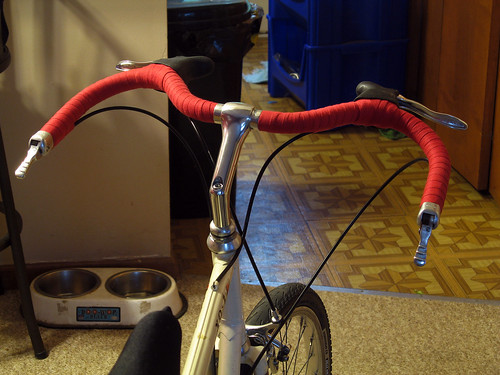Sure enough, a bike I had always drooled over, the Bridgestone XO-1, popped into my life. Someone was selling the frame and fork for an affordable amount, and I decided that opportunities like this are rare enough and plunked down the cash. I spent a while sourcing some decent but inexpensive components, and now have the bike I never really thought I'd have the chance to own.

Other websites do a good job explaining what the XO-1 is all about, and why it has such a cult status today, but it's important to remember that this is a bike that was not at all popular in its day, and, in my opinion, likely contributed to Bridgestone pulling out of the US bicycle market.
In the late eighties and early nineties, Bridgestone USA was run by the eccentric Grant Petersen, who made it clear that his focus was on "everyday" riding. In this market where the newest and shiniest sold best, Petersen's Bridgestones, with their lugged steel frames, friction shifting, cotton handlebar tape, rigid forks, and fat squishy tires, seemed out of place.

There were a few fanatical owners of the Bridgestone RB and MB series, who called themselves BOBs, or members of the Bridgestone Owner's Bunch. There was a BOB list, a newsletter that came out that had wonderful articles on setting up bikes, camping, and all sorts of "Bobbish" things. The bikes actually lent themselves well to a wide series of tasks, in that you could ride a rough road on even their raciest bike, and ride a road-oriented tour on their mountain bikes. In the end there just weren't enough BOBs to stay in business.
The XO-1 is perhaps the best and brightest symbol of this. Instead of the popular "hybrid" bicycles of the day, Petersen designed the XO series around a lightweight Ishiwata steel-tubed road frame with fast but comfortable geometry, gave it clearance for wide 26" tires, and designed a new do-everything handlebar, the Moustache, to go with it. Reviewers of the day blasted the bike to pieces, saying it was unfit for anything, from roads to trails, and the handlebars were the worst of all worlds, poor ergonomics and ugly to boot. They sold poorly for two years, and when Bridgestone pulled out of the US market in 1994, its dealers were left with many 1993 XO-1s to get rid of, many times for fire sale prices. As Petersen himself was heard to say about the demise of Bridgestone, "The nail that sticks up gets hammered down."

With all this going against it, it's hard to see why the XO-1 is so popular after the fact. It may be that the market has come around to seeing things the Petersen way, and it may be that the roughly 2000 XO-1s produced in 1992 and 1993 are rare enough to warrant cult status. In any case, the bike is odd, versatile, and fun to ride, which makes it right up my alley. I have the 1992 version, which has caliper instead of cantilever brakes, and is pearlescent white instead of the 1993 pumpkin orange color. I plan on using it for cyclocross, trails, and commuting - all of which it looks like it will do well at.
If you're interested in more of the history of Bridgestone USA, Sheldon Brown put together a great page with lots of reading material, including copies of the old BOB Gazettes, which contain incredible reading material about all things to do with the "retro-grouch" lifestyle. And take heart for Grant Petersen, as he began his own bicycle company, Rivendell, and it is still going strong, producing durable, classy, and versatile steel bikes in the vein of the best Bridgestone models.


1 comment:
Fabulous - congrats on the acquisition!
Post a Comment